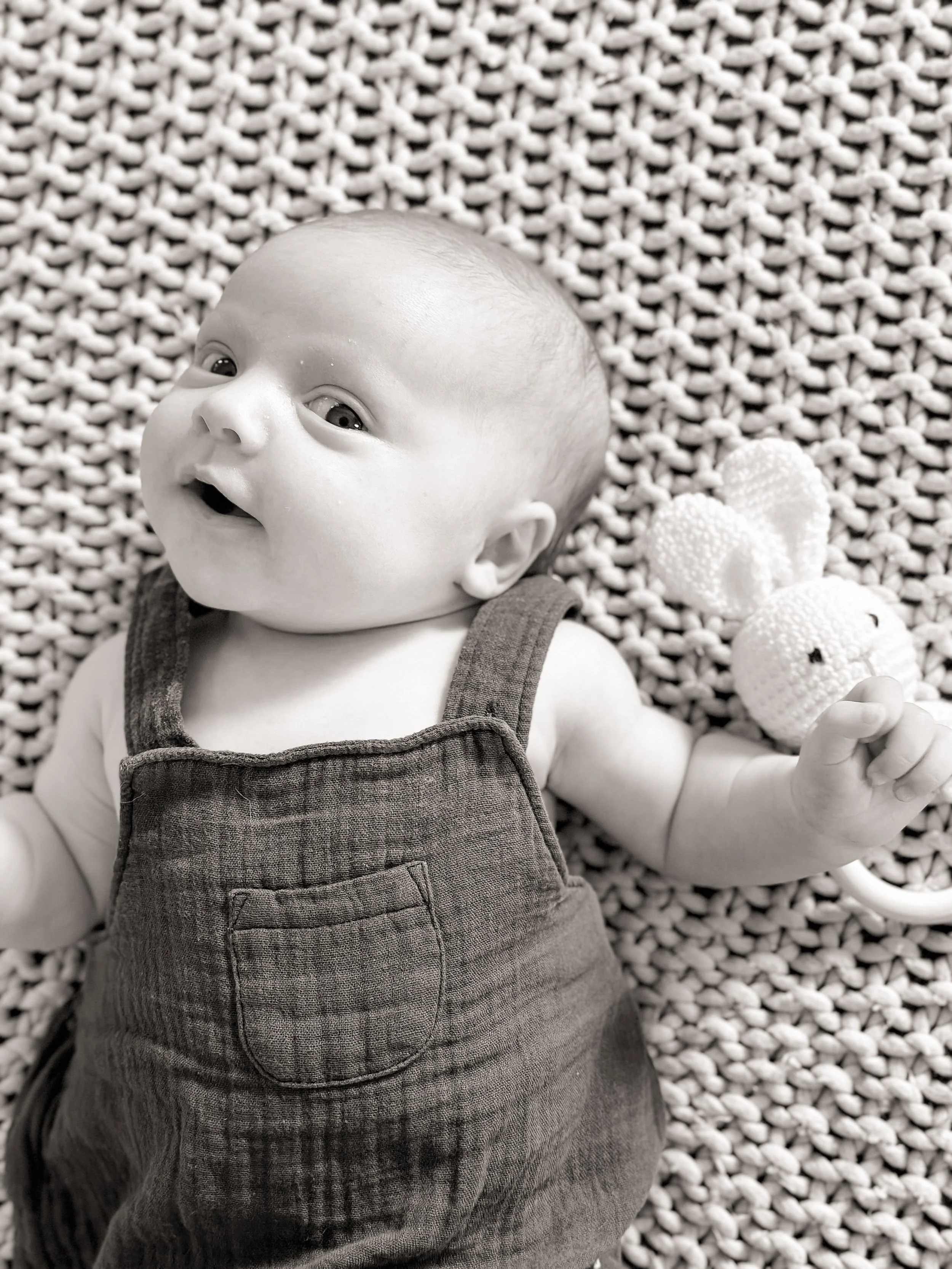Beyond the Neck: Tear-Free Physical Therapy for Infant Torticollis
What is Congenital Muscular Torticollis?
Congenital Muscular Torticollis (CMT) is a condition where a baby’s neck muscles—typically the sternocleidomastoid—are tight or shortened, causing the head to tilt to one side and rotate to the other. While the head tilt is often the first thing parents notice, the effects of torticollis go far beyond the neck.
As pediatric physical therapists at Movevery, we specialize in helping babies in Denver, CO with torticollis through a holistic approach, so they can sleep, feed, and move better while supporting their developmental milestones.
Torticollis Is More Than a Neck Issue
While the head tilt is the most visible sign, the underlying tightness often extends throughout the body due to restrictions in the fascia—the connective tissue throughout the body that links the head to toes. These restrictions often show up as a lateral C-curvature of the spine or a side preference caused by subtle spinal rotation, for example.
At Movevery, we treat more than what we see on the surface. We evaluate and support your baby holistically, knowing that no part of the body works in isolation.
How Fascial Tension Shows Up in Babies
Fascial imbalances can lead babies with torticollis to experience:
Difficulty with digestion, leading to gassiness, constipation, and/or reflux due to global body tension
Difficulty eliminating, as global body tension can impact bowel and bladder function
Body asymmetries including a C-shaped curvature of the spine, which may be visible when baby lies on their back or tummy
Limited ability to turn the head evenly in both directions, often leading to a strong preference to look one way during play, feeding, or sleep
Head flattening (plagiocephaly) on one side from prolonged positioning
Challenges with tummy time, making it harder to build strength and integrate reflexes
Delays in rolling, crawling, or using both sides of the body equally, as babies may favor one side over the other
Why You May Have Been Told “They’ll Grow Out of It”
Many parents are told that torticollis will resolve on its own or are given a few neck stretches to try. While some babies improve naturally, others continue to compensate in ways that affect their growth and comfort.
According to the 2024 Clinical Practice Guidelines for Congenital Muscular Torticollis from the American Physical Therapy Association (APTA), all newborns should be screened for torticollis within the first 2–3 days of life. Was your baby screened by their pediatrician for cervical range of motion at their newborn visit?
When physical therapy begins before 1 month of age, treatment often lasts just 6–8 weeks. Waiting until 6 months or later can mean 9–10 months of therapy with slower progress.
How Pediatric Physical Therapy Can Help
Historically, torticollis has been treated primarily through neck stretches to lengthen tight muscles. While this method can be effective to a degree, it’s often not well tolerated—many babies resist or cry, leaving parents feeling uncertain. These stretches also focus solely on the muscles, without addressing the deeper fascial tension that influences the entire body.
At Movevery, we offer a gentle, holistic, tear-free approach that supports not just the neck, but the whole baby—and it’s one that both babies and parents truly love. This approach allows babies to gain better alignment, develop stronger neck and core muscles, and confidently progress through milestones. We’re here to give you and your child a positive experience to help them thrive.
Comprehensive Evaluation
We assess more than just the neck—we look at posture, tongue function, head shape, shoulder symmetry, digestive patterns, and how your baby moves, sleeps, and feeds. Our whole-body lens helps us uncover the root of the tension and compensations we often see with torticollis.
Manual Therapy & Bodywork
Techniques like Craniosacral Fascial Therapy (CFT), Craniosacral Therapy (CST), and Total Motion Release TOTs (TMR TOTs) help release restrictions, support alignment, and regulate the nervous system—gently guiding your baby toward more ease, balance, and comfort.
Developmental Strength & Functional Movement
Through purposeful play and therapeutic handling, we help your baby build symmetrical strength, coordination, and body awareness. Our approach supports the foundation for motor milestones like rolling, crawling, sitting, and beyond—all in a way that feels fun and empowering for both baby and parent.
Parent Education & Support
We guide you every step of the way, helping you learn how to:
Support your baby’s body through holding, movement, and daily routines
Use purposeful play to encourage symmetry and motor development
Position your baby during feeding, sleep, and play
Maximize tummy time and functional transitions
Minimize time in containers (like swings or bouncers) that can affect development (like swings, bouncers, or baby seats) that may impact development
You’re Not Alone
Torticollis is highly treatable, especially with early intervention. If you’re noticing signs of head preference, flat spots, feeding difficulty, or developmental asymmetry — trust your instincts. Consult a physical therapist to assess your baby’s movement, development, tension, and alignment, as early intervention makes such a difference.
In Colorado, you can self-refer to physical therapy. You don’t need a pediatrician’s referral to get started.
If you have questions and are ready to get started, reach out to us today!
Together, we’ll help your little one thrive and empower you along the way.

